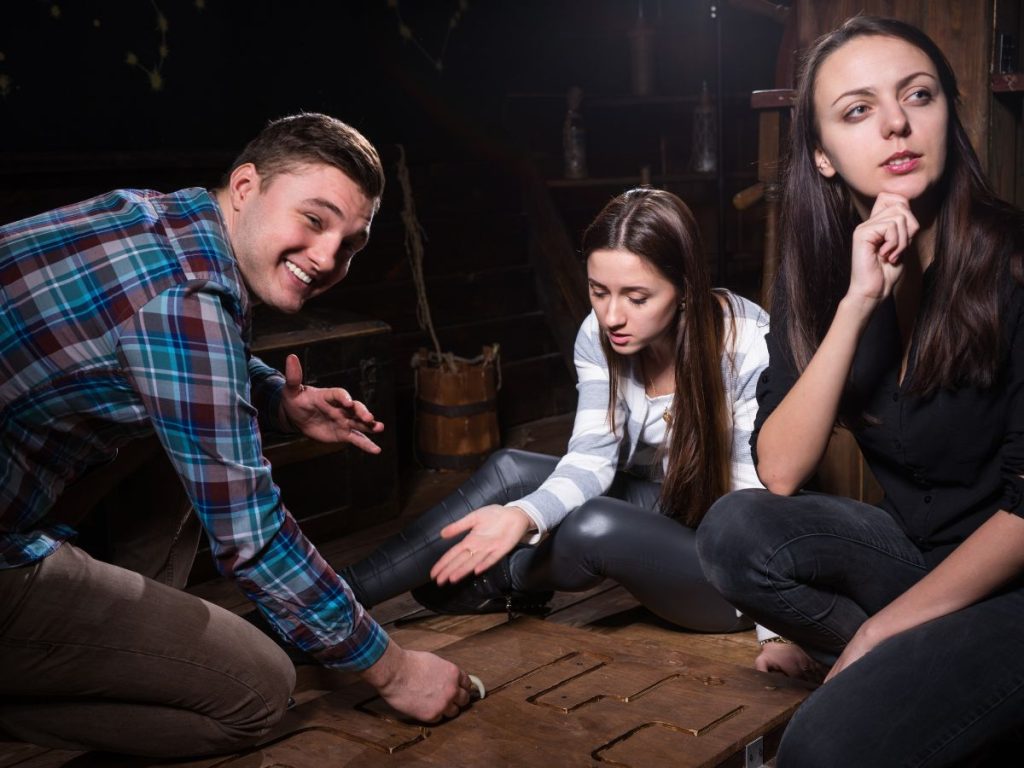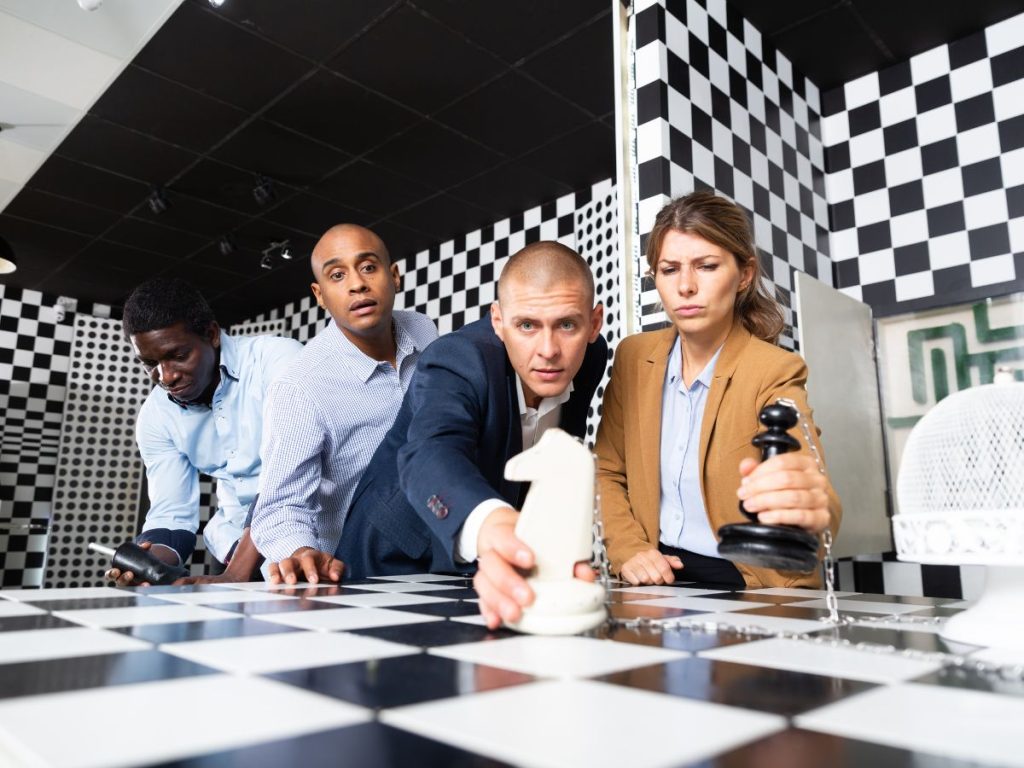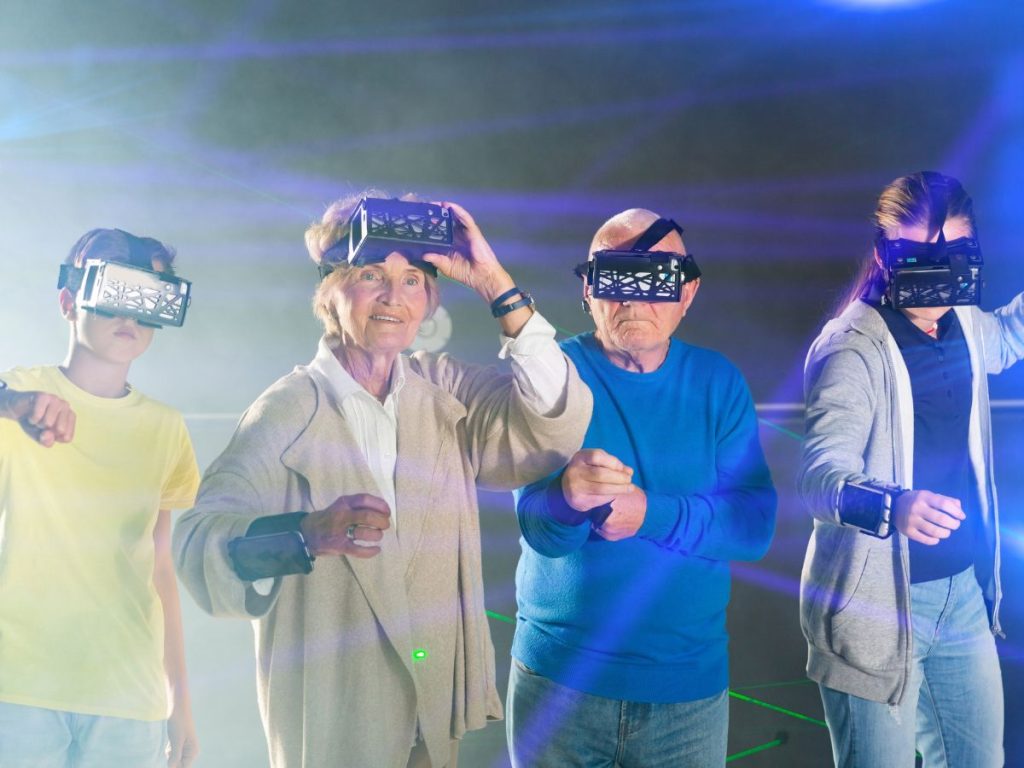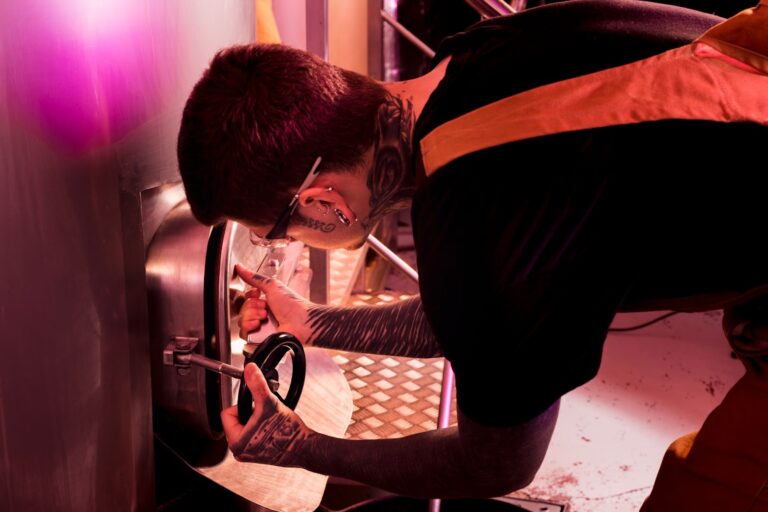The Ultimate Guide to Planning an Engaging Escape Room Experience for Adults
Ready for a high-energy, brain-racking, team-bonding expedition? We’re talking about escape rooms, those thrilling adventures that turn you into a detective, a wizard, or even an astronaut for an hour! And not just any escape room experience, but one specially designed for adults. Planning an engaging escape room experience is not child’s play (quite literally). It’s an art, a science, and a dash of magic.
Welcome to the realm of heart-pounding suspense and exhilarating problem-solving, where every second counts and each decision could be your last. We are Entermission, your trusted virtual escape room specialist. With our years of expertise and in-depth understanding of the game dynamics, we are poised to help you plan an immersive, challenging, and unforgettable adult escape room experience.
In this guide, we share our tried-and-true strategies for creating an escape room that is not just a game but an adventure – a dramatic race against time that will stimulate your mind, spark your creativity, and strengthen your bonds with your teammates. Dive in, and let’s embark on this exciting journey together!

Understanding the Audience
First thing first, know your players. Adults are a diverse group with different interests and skill levels. They’re keen on challenging themes, complex narratives, and sophisticated puzzles. You wouldn’t serve a gourmet dish to a toddler, right? Then why host a “Treasure Island” escape room for a group of history buffs or tech nerds?
Ensure the theme and difficulty level of the escape room resonates with the group’s interests and abilities. An immersive storyline is vital to hold the attention of adult players. Incorporate unexpected plot twists and turns to keep them on their toes. Remember, the devil is in the detail!
Choosing the Right Escape Room Venue
Location, location, location! Selecting the right escape room venue can make or break your experience. Researching and comparing different venues can be as thrilling as solving a puzzle. Look for places like Entermission Melbourne, known for its unique VR experience that blurs the line between reality and imagination.
Consider the theme, complexity, and overall experience offered by different venues. Read reviews, seek recommendations, and don’t hesitate to reach out to venues for a sneak peek.
Designing the Escape Room Experience
With the audience and venue nailed down, it’s time to delve into the heart of the experience – the storyline, puzzles, and room layout. Create a captivating storyline with a clear beginning, middle, and end. Challenging puzzles? Bring them on! Logic puzzles, physical tasks, riddles – variety is the spice of the escape room life.
Balance is vital when adjusting difficulty levels. Too easy? Boring. Too hard? Frustrating. Aim for “challenging but doable” – the sweet spot where the magic happens.
Design a logical flow within the room. Make sure clues and puzzles connect cohesively. This is where your spatial design skills come into play. And remember, no red herrings unless you want to face a mini-uprising!

Engaging the Senses: Props, Decor, and Atmosphere
Ever walked into a room and felt like you’ve stepped into another world? That’s the power of immersive decor. Every element contributes to the overall atmosphere, from the props to the sounds and lights.
Props and decor should enhance the theme. A vintage typewriter for a 1920s mystery, a futuristic control panel for a space adventure – you get the drift.
Interactive elements, like hidden compartments or motion-activated lights, can take the experience up a notch. You know what they say, “All’s fair in love and escape rooms!”
Incorporating Teamwork and Collaboration
Ah, teamwork – where the magic of collaboration turns the impossible into a piece of cake (or a solved puzzle, in our case). An escape room is not just about the “escape” but also the journey undertaken as a team. Here’s how to craft that journey:
Designing Puzzles That Require Collaboration
Imagine a scenario where a code must be read backward but can only be viewed from a mirror placed oddly high. One teammate reads, while another interprets, and yet another punches in the solution. A chain of collaboration!
Design puzzles that require more than one pair of hands, eyes, or brains. This ensures that every team member has a role to play, fostering a sense of unity and mutual dependence. Because, at the end of the day, teamwork makes the dream work!
Encouraging Effective Communication within the Team
Ever tried solving a puzzle while blindfolded, with only your teammate’s voice guiding you? Thrilling, right? Communication is the glue that holds the team together in an escape room.
Encourage participants to share their ideas, findings, and hunches. It’s not just about talking; listening is equally important. After all, what good is a brilliant solution if it’s lost in a sea of noise?
Fostering a Sense of Shared Accomplishment and Camaraderie
And now, for the grand finale. Nothing compares to the exhilaration of solving that final puzzle and racing against time to “escape.” It’s a shared victory, a testament to the power of collaboration and the bonds formed in the process.
When teammates realise they’ve achieved something together that they couldn’t have achieved alone, it creates a sense of shared accomplishment. And let’s not forget the laughter, high-fives, and group selfies that follow!
Before you begin the game, make sure to take care of any bathroom needs because once you’re playing, there will be no time to pause.

Safety Considerations
Safety first, folks! Fun and excitement should never compromise the physical safety of participants. Escape rooms are inherently safe environments, but that doesn’t mean we can ignore the basics. Clear instructions and guidelines at the beginning can prevent unnecessary accidents and mishaps. Keep emergency protocols ready and ensure everyone is aware of the exits. Oh, and don’t forget, running is only for Olympians, not escape rooms!
Preparing the Game Master or Host
Ahh, the Game Master, the puppeteer of the escape room adventure. The success of the escape room experience heavily relies on this unsung hero. Train them to deliver an engaging, memorable experience. Make sure they know the room layout, puzzles, and storyline inside out.
And how about a bit of role-play? Anticipating different player inquiries and challenges, and knowing how to handle them, can make the game flow smoothly. Who said being a Game Master was easy?
Enhancing the Escape Room Experience
Now, we’re getting into the fun stuff. Surprise elements? Check. Cutting-edge technology? Check. Post-game debriefing? You bet!
A sudden plot twist or unexpected challenge can spike the adrenaline and excitement. Imagine, just when they think they’re about to escape, BAM! A secret room!
Utilise technology to elevate the escape room experience. Think virtual reality, holograms, or touchscreen panels. Anything that gets a “wow” reaction.
And don’t forget the cherry on top: a post-game debriefing. Discussing strategies, missed clues, and funny moments can wrap up the experience on a high note.
Examine the differences between a hosted online escape room versus a virtual escape room.

Ensuring Accessibility and Inclusivity
Let’s be clear: Escape rooms are for everyone—design puzzles and clues that cater to different abilities and accommodate diverse needs. Ensure the venue is wheelchair accessible and provides options for those with hearing or visual impairments.
Having alternative solutions or hints available ensures that all participants feel included and can contribute to the game. Inclusivity isn’t just a buzzword. It’s the game-changer!
Promoting the Escape Room Experience
So, you’ve crafted the perfect escape room experience. Now, it’s showtime! Create an enticing marketing strategy to get people through the door. Utilise social media platforms and online communities to spread the word.
Remember, nothing beats a good old-fashioned recommendation. Encourage positive reviews and word-of-mouth publicity. If your escape room is a hit, they’ll queue up before you can say “escape”!

Ready to Embark on an Exciting Escape Room Escapade?
Phew! We’ve covered much ground, haven’t we? From understanding the adult audience, choosing the right venue, crafting a captivating experience, to promoting your escape room – it’s all part of the magic.
Escape rooms are not just games; they’re experiences that challenge the mind, foster teamwork, and create unforgettable memories. Now, with this ultimate guide at your fingertips, you’re all set to plan an engaging adult escape room experience.
Here’s the kicker: the real fun begins now! Start planning and let your imagination run wild. The escape room world is your oyster. Good luck and happy planning!
Book an Entermission adventure NOW!
FAQ
Is Escape Rooms Suitable for Your Health and Brain?
Absolutely! Escape rooms are like gyms for your brain. They improve cognitive functions, enhance problem-solving skills, and encourage creative thinking. Plus, the excitement and adrenaline rush can be a great stress buster. They’re a whole package of brain-training, heart-pounding fun!
Are Escape Rooms Worth the Investment?
100%! Investing in an escape room experience involves laughter, suspense, camaraderie, and memories that will last a lifetime. It’s not just about the game. It’s about the journey, the team spirit, and that sweet taste of victory at the end. You’re buying more than a ticket; you’re purchasing an unforgettable adventure.
What Are the Standard Codes Used in Escape Rooms?
Every escape room has unique codes, depending on the theme and storyline. Common ones include numeric codes, alphanumeric codes, symbol matching, or colour-coded puzzles. Don’t worry. You won’t need a degree in cryptology. Just an eagle eye and some out-of-the-box thinking!
How Many Puzzles Are Typically Included in An Escape Room?
The number of puzzles in an escape room can vary, typically between 10 and 20, depending on the room’s complexity and the time limit. Each puzzle is a stepping-stone towards your ultimate escape. Think of it as a thrilling obstacle race – for your mind!
Is There a Difference Between a Panic Room and An Escape Room?
Huge! A panic room is a secure space in a house or building where occupants can hide during emergencies. On the other hand, an escape room is a fun-filled, puzzle-solving adventure you voluntarily sign up for. They couldn’t be more different unless you accidentally lock yourself in a panic room, thinking it’s an escape room!
What Is the Minimum Age to Participate in An Escape Room in Australia?
In Australia, most escape rooms recommend a minimum age of 15 years old due to the complexity of the puzzles. However, this can vary depending on the room’s theme and difficulty level. It’s always best to check with the venue beforehand.
Are Escape Rooms Suitable for Older Adults?
Definitely! Age is just a number in escape rooms. You’re good to go if you enjoy solving puzzles and love a good adventure. However, if you have any specific accessibility requirements, checking with the venue in advance is a good idea.
What Happens If You Don’t Escape an Escape Room in Time?
Don’t worry. You won’t be left to haunt the room forever! If the time runs out, the Game Master will usually guide you out of the room. Some venues might even explain the remaining puzzles and the escape route. Just remember, it’s not about winning or losing. It’s about the fun you have along the way!
Is It Possible to Fail an Escape Room?
In terms of not escaping in time, yes. But in terms of having a blast, absolutely not! Remember, the goal of an escape room is to have fun, challenge your brain, and foster teamwork. Even if you don’t “escape,” if you’ve had a good time, that’s a win in our books!



